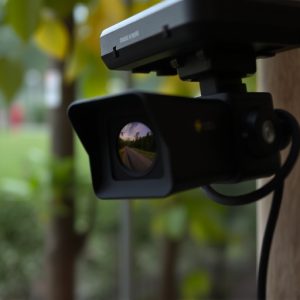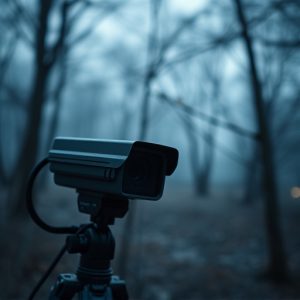Spy Camera Childcare Safety Guide: Detect & Prevent Hidden Threats
Hidden cameras in childcare settings pose significant risks to children's privacy and safety, w…….
Hidden cameras in childcare settings pose significant risks to children's privacy and safety, with advanced technology making them increasingly hard to detect. The "Spy Camera Childcare Safety Guide" offers essential advice for parents to protect their children. This includes understanding risks, conducting regular checks, securing electronics, and educating kids about privacy rights. Smartphone apps specializing in hidden camera detection provide an early warning system using infrared or heat signatures. Caregivers should adopt a systematic visual inspection approach, checking corners, edges, walls, doors, and ceilings for potential threats. Regular thorough checks, using equipment like metal detectors and thermal imaging cameras, securing entry points, and installing visible surveillance systems are vital preventive measures. Following the Spy Camera Childcare Safety Guide fosters trust and ensures a safer environment for all children.
In today’s digital age, ensuring childcare safety against hidden spy cameras is paramount. This comprehensive guide explores the dangers of covert surveillance in sensitive settings and equips parents with a spy camera childcare safety toolkit. Discover powerful smartphone apps designed to detect hidden cameras using advanced technology. Learn practical tips for thorough visual inspections and implement preventive measures to secure your child’s environment.
- Understanding Hidden Camera Dangers in Childcare Settings
- Smartphone Apps for Detecting Spy Cameras
- Practical Tips for Conducting Visual Inspections
- Preventive Measures: Securing Your Childcare Space
Understanding Hidden Camera Dangers in Childcare Settings
Hidden cameras in childcare settings pose a significant threat to children’s privacy and safety, making it crucial for parents and caregivers to be vigilant. With advanced technology, spy cameras have become smaller and more concealed, allowing them to be easily placed in unsuspecting locations like toys, bookcases, or even clock radios. This raises serious concerns about the potential for surveillance and the possibility of compromising sensitive information.
A Spy Camera Childcare Safety Guide is essential for parents to familiarize themselves with. It includes tips such as conducting regular checks for suspicious devices, ensuring all electronics are securely fastened, and educating children about privacy rights. By staying proactive and informed, childcare facilities can create a safer environment, fostering trust between parents and caregivers while mitigating the risks associated with hidden cameras.
Smartphone Apps for Detecting Spy Cameras
Smartphone apps have emerged as powerful tools in the quest for enhancing privacy and childcare safety. These applications are designed to detect hidden cameras, offering a practical solution for concerned parents and caregivers. With advanced sensors and algorithms, some apps can identify infrared or heat signatures that many spy cameras emit, providing an early warning system.
The Spy Camera Childcare Safety Guide is a popular app category, featuring tools that scan surroundings for potential threats. These apps often allow users to detect cameras in homes, offices, and public spaces, ensuring a sense of security. By utilizing smartphone technology, individuals can take proactive measures against privacy invasion and maintain control over their personal environments.
Practical Tips for Conducting Visual Inspections
When conducting visual inspections, especially in sensitive areas like childcare facilities, a systematic approach is key. Start by examining corners and edges, as hidden cameras are often strategically placed to avoid detection. Use your smartphone’s flashlight to illuminate dimly lit spaces, as this can reveal reflective surfaces that may indicate the presence of a camera lens. Look for any unusual markings or holes on walls, doors, or ceilings—these could be indicators of surveillance equipment.
In the context of a Spy Camera Childcare Safety Guide, it’s crucial to involve staff and parents. Encourage everyone to be vigilant and aware of potential hiding spots. Regular visual checks in common areas, playrooms, and bedrooms can significantly reduce risks. Don’t forget to inspect outdoor spaces as well; cameras can be placed outside to monitor activities without detection. Using a smartphone’s camera and its various settings, such as night mode or zoom, can aid in closer inspection of hard-to-reach corners and potential camera lenses.
Preventive Measures: Securing Your Childcare Space
To ensure a safe and secure environment for children, it’s essential to incorporate preventive measures that make your childcare space less susceptible to hidden cameras. Start by conducting regular, thorough checks of all areas, including walls, ceiling corners, and behind furniture. Use professional equipment like metal detectors and thermal imaging cameras designed to detect unusual heat signatures or electronic devices. Secure all entry and exit points with robust locks and consider installing surveillance systems that are clearly visible to deter potential intruders.
Incorporating a Spy Camera Childcare Safety Guide can further bolster your efforts. Educate staff and parents about the importance of privacy and security, encouraging them to report any suspicious activity or objects. Regularly update security protocols and keep all devices up-to-date with the latest software patches. By combining proactive measures and open communication, you create a robust defense against hidden cameras, fostering an atmosphere of trust and safety for every child in your care.
In conclusion, safeguarding childcare settings from hidden cameras is paramount for maintaining a secure environment. By combining advanced smartphone apps, diligent visual inspections, and robust preventive measures, parents and caregivers can ensure a safer space for children. The Spy Camera Childcare Safety Guide offers practical tools and insights to identify and mitigate risks, fostering trust and peace of mind in these crucial spaces.


